#ERP Clean Core
Explore tagged Tumblr posts
Text
SAP Clean Core Strategy in USA: Purify.io by McKinsol
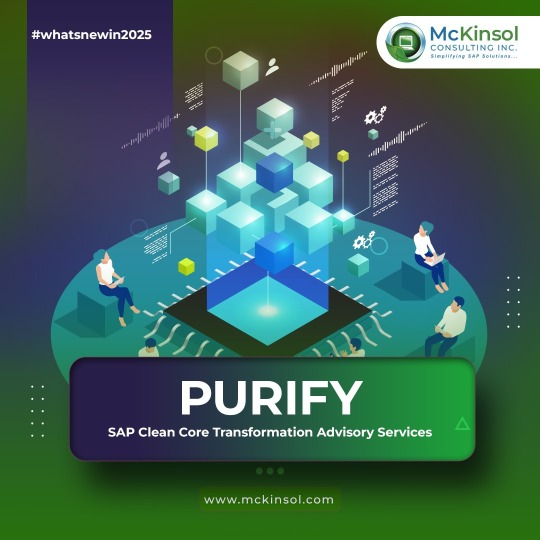
In the fast-evolving world of enterprise resource planning (ERP), maintaining a clean and optimized system core is essential for businesses striving for agility and innovation. McKinsol Consulting Inc. introduces Purify.io, a groundbreaking solution designed to streamline SAP clean core strategies in the USA, enabling organizations to achieve seamless transformations and future-proof their operations.
Understanding SAP Clean Core
The SAP clean core approach focuses on minimizing customizations in the core ERP system, leveraging standard SAP functionalities, and utilizing the SAP Business Technology Platform (Clean Core SAP BTP) for extensions and integrations. This methodology ensures:
Reduced technical debt
Easier upgrades and migrations
Enhanced system performance
Accelerated innovation cycles
Purify.io acts as a catalyst for adopting this strategy, providing businesses with a structured framework to implement and sustain a clean core.
Challenges of Traditional ERP Systems
Organizations often face significant challenges with legacy ERP systems, including excessive customizations, complex integrations, and costly maintenance. These challenges hinder digital transformation and scalability. McKinsol’s ERP clean core solutions address these pain points, ensuring businesses stay competitive in the digital era.
Key Features of Purify.io
Purify.io is tailored to meet the diverse needs of organizations in the USA, offering a range of features that simplify the journey to a clean core:
Custom Code Analysis: Identifies and eliminates redundant customizations.
SAP Clean Core Integration: Seamlessly integrates with SAP BTP to extend functionalities without touching the core.
Automated Transformation Tools: Accelerates the clean core transformation process with minimal disruptions.
Ongoing Compliance Monitoring: Ensures the system remains aligned with SAP’s best practices.
Benefits of SAP Clean Core Transformation
Adopting the SAP clean core strategy with Purify.io unlocks several benefits:
Simplified Upgrades: Clean core systems are easier and faster to upgrade, ensuring compatibility with the latest SAP innovations.
Cost Efficiency: Reduces maintenance and operational costs by eliminating unnecessary customizations.
Agility and Flexibility: Enables businesses to respond swiftly to market demands by leveraging standard SAP capabilities.
Enhanced Innovation: Facilitates the adoption of cutting-edge technologies through SAP BTP extensions.
SAP Clean Core Transformation Advisory Services
McKinsol’s SAP clean core transformation advisory services provide expert guidance throughout the transformation journey. Our team works closely with organizations to:
Assess the current state of their ERP systems
Develop a customized clean core strategy
Implement Purify.io tools and methodologies
Provide ongoing support and optimization
Why Choose McKinsol for SAP Clean Core in the USA?
McKinsol Consulting Inc. stands out as a trusted partner for businesses aiming to embrace the clean core philosophy. With years of expertise in SAP consulting and a deep understanding of industry-specific challenges, McKinsol ensures:
Tailored solutions for unique business needs
Proven methodologies and best practices
A customer-centric approach to transformation
Conclusion
The SAP clean core strategy is no longer a choice but a necessity for businesses seeking long-term success in the digital age. With Purify.io, McKinsol empowers organizations across the USA to streamline their SAP landscapes, drive innovation, and achieve operational excellence.
Embrace the future of ERP with McKinsol and Purify.io—your trusted partners in clean core transformation. Let’s build a smarter, more agile business together.
0 notes
Text
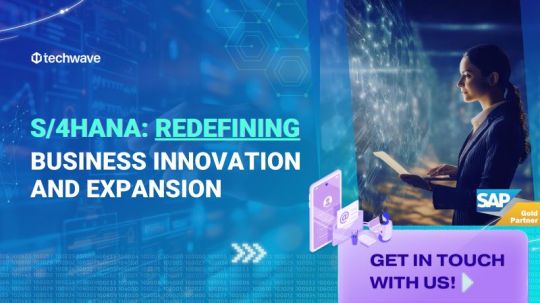
Leveraging S/4HANA for Strategic Digital Transformation In the digital landscape, businesses are redefining their competitive edge through technology. SAP S/4HANA is more than an ERP system. It is a strategic framework for digital transformation which enables businesses to adapt, innovate, and expand. Discover how S/4HANA’s clean core can become the cornerstone of your digital strategy with RISE with SAP. Techwave’s expertise and innovative solutions will help your business become future-proof. Explore the Path to a Future-Ready ERP with us https://techwave.net/enterprise-application/rise-with-sap/
2 notes
·
View notes
Text
Recesses of Me With OCD
In my brain I scream, Oh please, set me free! But the jailer is always me.
I can’t step aside, elusive is outside. Defeated, alone, resigned.
I stay in my vest, ‘cause you’ll think I’m a pest. Review, ruminate, second guess.
Trapped inside my mind, craving chats that bind. “You offend” fear lied. Wait…did I?
You think I don’t care. I stammer and stare. Really, I long to share.
Yearning for our fate, with open gates. Secretly sensing we’re best mates.
I can’t bridge the gap. Can you make a map? Reassurance won’t let me fall flat.
You’ll do all the work. I worry and warp, convinced I am a twerp.
What is wrong with me? Is my inner plea. Is this how I am destined to be?
An affection hoarder? What keeps the border between you and me?
Oh yeah…I have Obsessive Compulsive Disorder and Social Anxiety.
_
A life of its own. Forever o’ergrown. I have learned to let it be.
And live behind glass, while longing to ask: Let us bear our souls intimately.
Make me clean, God, please. Brush teeth ‘til they bleed. Wash ‘til my skin recedes.
Yes, I have those. It’s starting to slow, ‘cept when sinister germs come close.
Waves of shame slay. Focus on the way. Must say novenas of the day.
Saints these and Saints those. Father, Son, Holy Ghost. For my soul, please repose.
Hours on research gate. Lost in a debate. Compulsive research of my fate.
Culling symptom lists, of me to make sense. God, am I a narcissist?
Down the rabbit hole. Lost touch with my goals. The psyched ward ate my wounded soul.
Gave me side eyed looks, labeled me a kook, my quirks the doctors all mistook.
What is wrong with me? Is my inner plea. Is this how I am destined to be?
It’s Hell, this disorder, fortifying the border between you and me!
F*ck you, Obsessive Compulsive Disorder and Social Anxiety!
_
I’ve tried to break free with ERP. Torture excruciating.
Then came CBT. It never helped me. Pulling me farther out to sea.
Perhaps ACT impacts, with values on track. Head out of my *ss, I’m back.
IFS reset. Now my parts at rest. Self-leadership provides a nest.
A True Presence be. Coupled with me, found my celestial nobility.
It’s quite the hike. I’ve learned my might. Gained my inner sight.
Even with my crown, I still fall down. Tumble, suffocate, nearly drown.
Again, I rise, with eyes on the prize, to walk the earth humbly and wise.
What is right with me? I’m starting to see. Who I am destined to be.
Life’s getting shorter. Action was in order desperately.
Social Anxiety and Obsessive Compulsive Disorder, you won’t beat me.
_
With wings pain once bore, today I soar. Balanced, centered in my core.
Joyfully, I sing. I am coming clean. My dark recesses disclosing.
A beacon of light, to provide sight, for others stuck in flight.
And you I see, too. What you’re going through. I’m supporting your inner coup.
Depth to hold dear. I’ll draw you near. Your story I want to hear.
You can’t offend. I will only tend to the places where you bend.
Let there be an us, pure and free of lust. It will be marvelous.
Friends’ everlasting, no longer casting ourselves in roles and acting.
I have found me. Allowing eyes to see journey for destiny.
Down with the border. No longer a hoarder, I’m giving of self completely.

Social Anxiety and Obsessive Compulsive Disorder, you are not me.
But with me you’ll always be—separately.
#original poem#poem#poetic#poetry#inspire#mental health#mental illness#writers and poets#ocd things#actually ocd#ocd#obsessive compulsive disorder#women poets#women writers#womenpoetsoftumblr#womenwritersoftumbler#my poetic life#poeticjourney#mypoeticways#writing community#poetrycommunity#poem community#poems and quotes#poems on tumblr#my poem#spilled poem#prose#poems and poetry#long reads#long poem
2 notes
·
View notes
Text
Top 10 Cleaning Robot Manufacturers in China
Cleaning Robots refer to autonomous devices specifically engineered to maintain floor surfaces through automated vacuuming and
mopping functions. These intelligent machines utilize cutting-edge technologies including LIDAR navigation, AI-powered path planning,
and smart suction systems to deliver thorough, hands-free cleaning. The core purpose of these robots is to provide a safer, more convenient,
and time-efficient solution for home and commercial cleaning, particularly in large spaces or hard-to-reach areas. China has emerged as
the global manufacturing center for robotic cleaning technology, housing numerous specialized manufacturers recognized for their innovative
designs, superior quality, and continuous technological advancements.
In this definitive industry guide, we will examine the top 10 floor cleaning robot manufacturers in China. You'll gain detailed insights into each
company's background, technological capabilities, product advantages, market positioning, and ideal use cases - all from the perspective of
an industry insider with over a decade of manufacturing experience. Whether you're a wholesaler, private label brand, or commercial buyer,
this guide will help you identify the perfect manufacturing partner for your specific business needs.
Brand
Strengths
Best For
1: LINCINCO
Premier OEM/ODM Specialist
OEM partners, tailored solutions
2: Ecovacs Robotics
Technology Leader
High-end residences and families of technology enthusiasts
3: Roborock
Premium Performance
Hard floor cleaning and quality-oriented users
4: Xiaomi Mijia
Value Leader
Entry-level market, young user group
5: Dreame Technology
Dreame Technology
Demand for technology-innovative products
6: ILIFE Robotics
Specialized Cleaning Solutions Expert
Special floor cleaning requirements
7: Kyvol
Smart Home Integration Leader
Smart home integration scenarios
8: Lefant
Compact Design Specialist
An apartment with low furniture
9: Proscenic
Commercial Cleaning Solutions
The field of commercial cleaning
10: Coredy
Balanced Value Provider
Basic cleaning of rental housing
1. LINCINCO - Premier OEM/ODM Specialist
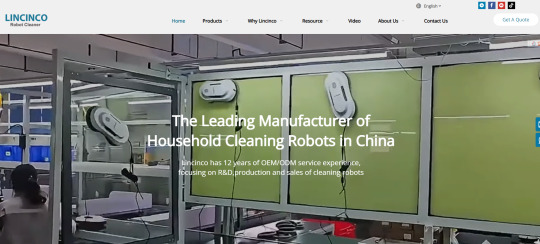
Headquarters: Dongguan, Guangdong Established: 2018
Factory Area: 50,000㎡
Employee: 635 ( include 65 professionals)
135 sets of molding injection, molding machine 80-1400T.
Production lines: 11 finished product assembly lines, 4.5 finished product lines
Production Capacity:4 million units per year
Product Standard:
GB 4343.1-2009;GB 4706.1-2005;
GB 4706.7-2004;GB 17625.1-2012 Export Markets: 85% of production (North America, Europe, Asia)
Technical Specifications:
Navigation: LIDAR 4.0 + AI Visual (dual system)
Corner Cleaning:Mechanical arm extension,clean the corners
Suction Power: 5000Pa-10000Pa (adjustable)
Battery: 5200mAh lithium (120min runtime)
Noise Level: ≤65dB
Key Advantages:
Deep Customization: 15+ customizable points including:
Housing colors/materials
Voice prompt languages (supports 12 languages)
App interface branding
Cleaning mode presets
Rapid Prototyping: New samples ready in 7-10 days
Quality Assurance: 7 inspection points with <0.5% defect rate
Certifications: CE, FCC, RoHS, ERP, KC, PSE
Market Positioning:
SegmentPrice RangeMOQLead Time
Entry-level
$120-$180
500
25 days
Mid-range
$180-$280
300
30 days
Premium
$280-$400
200
35 days
Recent Development: Launched new AI-powered navigation system in Q1 2024, reducing cleaning time by 25% through optimized path algorithms.
Recommended For: Private label brands, wholesalers needing custom solutions, buyers targeting specific regional markets.
2. Ecovacs Robotics - Technology Leader
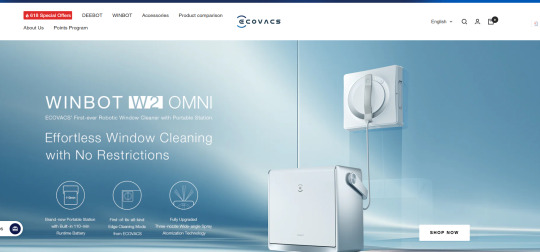
Headquarters: Suzhou, Jiangsu Annual Output: 3 million+ units R&D Investment: 8.7% of revenue
Flagship Model: DEEBOT X2 Omni
Navigation: AIVI 3.0 (AI Visual Interpretation)
Suction: 8000Pa (industry-leading)
Features: Auto-empty, auto-mop wash, voice control
Battery: 6400mAh (200min runtime)
Market Reach:
Sold in 60+ countries
1,200+ retail partners worldwide
37% market share in North America (2023)
Strengths: Best-in-class navigation technology, complete product ecosystem Weaknesses: Higher price point, limited customization options Recommended For: Tech-focused buyers, premium market segments
3. Roborock - Premium Performance

Production Base: Beijing Employees: 2,800+ (35% in R&D)
Technology Highlights:
ReactiveAI 2.0: Recognizes 42 object types
Sonic Mopping: 3,000 vibrations/minute
Dock Features: Hot water washing, 3-hour drying
2024 Models Comparison:
ModelSuctionBatteryPriceSpecial Feature
S8 Pro Ultra
5100Pa
5200mAh
$1,599
VibraRise 2.0
Q Revo
5500Pa
5000mAh
$899
Dual Spinning Mops
Dyad Pro
N/A
60min
$499
Wet/Dry Combo
Recent Achievement: Roborock S8 Pro Ultra won 2024 CES Innovation Award Recommended For: High-end residential market, tech enthusiasts
4. Xiaomi Mijia - Value Leader
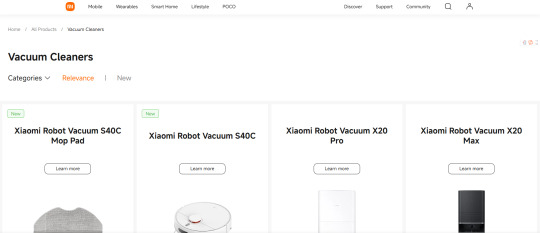
Parent Company: Xiaomi Ecosystem Manufacturing Partners: 3 contract factories
Product Strategy:
Price Range: $200-$500
Refresh Cycle: 18 months
Smart Home Integration: Mi Home ecosystem
Market Performance:
#1 budget brand in Asia (32% market share)
15 million units sold globally (2023)
4.8/5 average customer rating
Recommended For: Price-sensitive markets, first-time buyers
5. Dreame Technology - Innovation Powerhouse

Owned By: Xiaomi (minority stake) Patents Held: 1,200+
Breakthrough Technologies:
Auto-Empty Station: 60-day capacity
Dual-Rotary Mopping: 180RPM
Cross-Brand Compatibility: Works with 3rd party apps
2024 Expansion:
New D10 series for European market
Partnership with Bosch for motor technology
$200 million R&D center under construction
Recommended For: Innovative retailers, smart home integrators
Comparison Table: Top 5 Manufacturers
ManufacturerStrengthPrice RangeMOQLead TimeBest For
LINCINCO
Customization
$120-$400
200
25-35d
OEM/Private Label
Ecovacs
Technology
$400-$1,500
1,000
45d
Premium Retail
Roborock
Performance
$500-$1,600
800
50d
High-End Market
Xiaomi
Value
$200-$500
5,000
20d
Mass Market
Dreame
Innovation
$300-$800
1,500
30d
Tech Retailers
6. ILIFE Robotics - Specialized Cleaning Solutions Expert
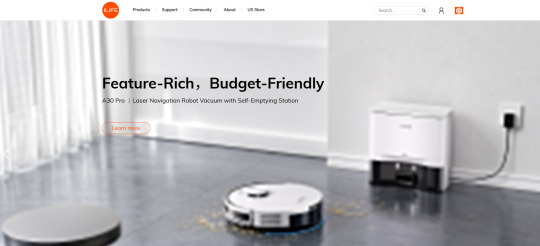
Headquarters: Shenzhen, Guangdong Established: 2007 Annual Production: 2.4 million units
Technical Specifications:
Navigation System: Gyroscopic navigation with anti-drop sensors
Suction Power: 1000-2000Pa (adjustable)
Specialized Models:
V3s Pro: Pet hair specialist with tangle-free rubber brush
A4s: Hard floor expert with triple cleaning system
W400: Wet/dry hybrid for complete floor care
Manufacturing Capabilities:
FacilityAreaProduction LinesDaily Output
Shenzhen
45,000㎡
8
8,000 units
Dongguan
30,000㎡
5
5,000 units
Market Performance:
85% export ratio (North America 60%, Europe 25%)
35% YOY growth in pet specialty models
4.3/5 average Amazon rating across products
Recommended For: Retailers targeting pet owners, hard surface cleaning specialists
7. Kyvol - Smart Home Integration Leader
Headquarters: Nanjing, Jiangsu R&D Team: 150+ engineers Patents Held: 87 (including 12 invention patents)
Smart Connectivity Features:
App Control: Kyvol Home App (iOS/Android)
Voice Control: Amazon Alexa, Google Assistant
Smart Scheduling: AI-powered cleaning planning
Matter Protocol: Full compatibility with smart home ecosystems
Product Line Overview:
SeriesKey FeaturePrice RangeTarget Market
E30
Basic Smart
$199-$249
Entry-level
E31
Matter Support
$279-$329
Smart Homes
P50
AI Camera
$399-$449
Premium
Quality Certifications:
CE, FCC, RoHS
ISO 9001:2015 certified
Google Home official partner
Recommended For: Smart home retailers, tech-focused distributors
8. Lefant - Compact Design Specialist
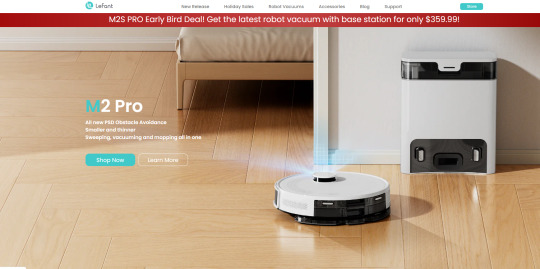
Factory Location: Zhongshan, Guangdong Production Area: 28,000㎡ Workforce: 800+ employees
Design Innovations:
Ultra-Low Profile: 2.85" height (industry thinnest)
Modular Design: Quick-change components
Quiet Operation: As low as 52dB (library-quiet)
Product Comparison:
ModelHeightNoiseSuctionBattery
M210
2.85"
52dB
2000Pa
2600mAh
M280
3.15"
55dB
2500Pa
3000mAh
M350
3.50"
58dB
3000Pa
3200mAh
Market Position:
#1 in compact robots (32% market share)
90% customer satisfaction rate
18-month product lifecycle
Recommended For: Apartment dwellers, urban retailers, pet owners
9. Proscenic - Commercial Cleaning Solutions
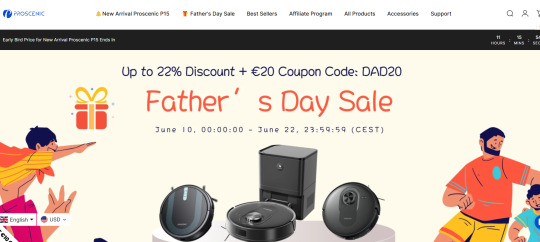
Parent Company: Proscenic Technology Group Established: 1996 Global Offices: 5 countries
Commercial Product Line:
UV Sterilization Series:
Hospital-grade disinfection
99.9% germ elimination rate
50,000 sq.ft daily coverage
Large-Area Series:
6000mAh battery (8h runtime)
5000Pa suction
Fleet management software
Window Cleaning Series:
25kg suction force
IP65 waterproof
200m cable length
Certifications:
ISO 13485 (Medical Devices)
EN 60601-1 (Medical Electrical Equipment)
UL Commercial Grade
Recommended For: Hotel chains, hospital suppliers, facility managers
10. Coredy - Balanced Value Provider

Manufacturing Base: Ningbo, Zhejiang Export Experience: 12 years Main Markets: Europe (60%), North America (30%)
Value Proposition:
Price-Performance Ratio: 30% below major brands
Reliability: <2% return rate
Simplicity: One-button operation
Product Matrix:
SeriesSuctionBatteryNavigationPrice
R300
2000Pa
2600mAh
Random
$199
R500
2500Pa
3000mAh
Gyro
$249
R700
3000Pa
3200mAh
LDS
$299
Production Capacity:
3 fully automated production lines
40,000 units/month capacity
15-day standard lead time
Recommended For: Value-focused retailers, secondary product lines
Detailed Comparison: 6-10 Manufacturers
CriteriaILIFEKyvolLefantProscenicCoredy
Specialization
Pet/Hard Floors
Smart Home
Compact
Commercial
Value
Price Range
$199-$399
$199-$449
$179-$349
$499-$2,999
$199-$299
MOQ
500
300
400
100
500
Lead Time
30d
25d
28d
45d
20d
Customization
Limited
UI Only
Colors
Full OEM
None
Best For
Specialty Retail
Tech Stores
Urban
B2B
Mass Market
How to Choose Your Ideal Manufacturer?
Selection Matrix:
NeedBudgetRecommended Choice
Custom OEM/ODM
Medium
LINCINCO
Cutting-Edge Tech
High
Ecovacs
Premium Performance
High
Roborock
Mass Market Value
Low
Xiaomi
Innovative Features
Medium
Dreame
Pet Hair Solutions
Medium
ILIFE
Smart Home Focus
Medium
Kyvol
Compact Design
Low-Med
Lefant
Commercial Grade
High
Proscenic
Balanced Value
Medium
Coredy
Why LINCINCO Stands Out for Business Buyers?
While all these manufacturers have strengths, LINCINCO offers unique advantages for B2B buyers:
True Customization: Unlike brands focused on their own products, we adapt to your specifications
Flexible MOQs: Starting from 200 units vs. typical 1,000+ minimums
Faster Time-to-Market: 30-day average production cycle vs. industry-standard 45-60 days
Direct Factory Pricing: No brand premium markup
Quality Assurance: Our defect rate is 80% lower than industry average
Recent Client Success: Helped a European retailer launch their private label line with 15 customized models in just 4 months.
Conclusion
China's cleaning robot manufacturers offer unparalleled variety from budget to premium segments. For private label and customized
solutions, LINCINCO provides the ideal combination of quality, flexibility and value. Meanwhile, brands like Ecovacs and Roborock lead
in consumer-facing technology. Your optimal choice depends on target market, technical requirements and business model.
0 notes
Text
Empowering Businesses with Software Development – By ELOIACS
In today’s rapidly evolving digital world, software is more than just a tool — it’s a strategic asset that helps businesses scale, streamline, and succeed. At ELOIACS, we specialize in delivering powerful and customized software development solutions that transform challenges into opportunities. Whether you're a startup or an established brand, our technology helps you work smarter and grow faster.
Why Software Development Matters
Many businesses struggle with off the shelf software that doesn’t fully meet their unique needs. These tools often lack flexibility, scalability, and the integration capabilities modern businesses require.
That’s where custom software comes in.
With personalized software solutions, businesses can automate repetitive tasks, improve team productivity, secure their data, and offer better services to their customers all while reducing long-term costs. Investing in custom software is not just about building a product, it’s about creating the right tool for your specific growth journey.
Services Offered by ELOIACS
At ELOIACS, we provide end-to-end software development services tailored to fit your industry and goals. Our core services include:
Custom Web Development
Fast, responsive, and scalable websites and web apps built for performance and user experience.
Mobile App Development
Engaging mobile apps for Android and iOS platforms that connect your business with users anytime, anywhere.
E-commerce Platform Development
We create high-converting online stores with seamless navigation, secure payment integrations, and beautiful designs.
ERP & CRM Systems
Powerful internal tools that help you manage operations, customer relationships, inventory, and analytics in one place.
API Integration & Custom Tools
Need to connect multiple platforms? We build smart APIs that ensure smooth data flow across your software systems.
Maintenance, Support & Upgrades
Post-launch support to keep your systems running smoothly and securely, with timely updates and feature enhancements.
Our Development Process
We follow a strategic, transparent, and collaborative approach to software development:
Discovery & Requirement Gathering Understanding your goals, users, and technical needs.
Wireframing & UI/UX Design Designing clean and functional interfaces to enhance user experience.
Agile Development Using iterative cycles to deliver quick results and incorporate feedback.
Testing & Quality Assurance Ensuring the software is bug-free, secure, and user-friendly.
Deployment & Support Smooth launch, training (if needed), and continuous post-deployment support.
Industries We Serve
ELOIACS has worked with clients across multiple sectors, including:
E-commerce & Retail
Healthcare
Education & EdTech
Logistics & Transportation
Real Estate & Property Tech
Startups & Tech-Driven Enterprises
Our industry-specific knowledge allows us to create solutions that align perfectly with business operations and customer expectations.
Why Choose ELOIACS?
Choosing ELOIACS means choosing a trusted partner in digital growth. Here’s why our clients love working with us:
Expert Development Team: Skilled professionals with diverse tech backgrounds.
Result-Oriented Approach: We focus on solving real business problems.
Customized Solutions: No one-size-fits-all — we build what you need.
Timely Delivery: Agile process ensures faster turnaround.
Transparent Communication: You’re updated at every step.
Affordable Pricing: Scalable services that fit your budget.
A Snapshot of Client Success
“Working with ELOIACS transformed our operations. The custom CRM they built reduced our manual work by 60% and improved our customer follow-ups like never before.” – [Client Name]
Get in Touch – Let’s Build Something Great
Your next big leap in business starts with the right technology partner. At ELOIACS, we are passionate about building smart, secure, and scalable software solutions that help businesses like yours grow.
Visit Us: https://eloiacs.com/ Email:[email protected]
0 notes
Text
Seamless Data Migration for Digital Transformation – Pilog Group’s Proven Expertise
As businesses evolve and adopt new technologies, migrating data from legacy systems to modern platforms becomes essential. However, data migration is not just about moving information—it’s about transferring clean, accurate, and meaningful data that supports business continuity and innovation. Pilog Group stands at the forefront of this process, offering reliable, efficient, and secure data migration solutions.
Understanding Data Migration
Data migration is the process of transferring data between storage types, formats, or computer systems. It often takes place during system upgrades, cloud adoption, or mergers and acquisitions. Poorly managed data migration can lead to data loss, downtime, and operational disruptions. That’s why a trusted partner like Pilog Group is crucial for ensuring a successful transition.
Why Choose Pilog Group for Data Migration?
With decades of experience in Master Data Management and digital transformation projects, Pilog Group offers end-to-end data migration services tailored to industry-specific needs. Their approach ensures not only the smooth transfer of data but also its quality, consistency, and compliance.
Core Benefits of Pilog’s Data Migration Services:
Data Accuracy: Pilog cleanses, deduplicates, and enriches data before migration to eliminate errors and redundancy.
Minimal Downtime: Well-planned execution ensures minimal impact on business operations.
System Compatibility: Migration services are compatible with major ERP platforms like SAP, Oracle, and Microsoft.
Secure Transfers: Pilog ensures data integrity and confidentiality throughout the migration process.
Post-Migration Support: Continued validation and testing after migration guarantee long-term reliability.
Pilog’s Proven Methodology
Pilog Group uses a structured, phase-wise methodology that includes:
Assessment and Planning
Data Cleansing and Mapping
Validation and Testing
Execution and Go-Live Support
Post-Migration Optimization
This approach ensures that data remains an asset, not a liability, after migration.
Conclusion
Data migration is a critical step in any digital transformation journey. With Pilog Group’s advanced tools, proven frameworks, and industry expertise, organizations can migrate their data with confidence and precision. Trust Pilog to turn a complex challenge into a strategic opportunity—ensuring your data is not just moved, but optimized for the future.
0 notes
Text
Mastering Supply Chain and Planning for Business Success

In today’s fast-paced and ever-changing business world, efficient supply chain and planning processes are more critical than ever. Companies across industries rely heavily on streamlined logistics, accurate forecasting, and synchronized operations to meet customer expectations and remain competitive. This blog will explore the importance, strategies, and best practices of supply chain and planning, and how businesses can leverage them to optimize performance and profitability.
Understanding the Concept of Supply Chain and Planning
The supply chain and planning ecosystem comprises all the activities, resources, and technologies involved in the flow of goods from suppliers to customers. It includes procurement, production, warehousing, transportation, demand forecasting, and inventory management.
Planning, in particular, plays a central role in aligning supply chain operations with business goals. It involves anticipating customer demand, managing resources, scheduling production, and ensuring timely deliveries.
Without an efficient supply chain and planning strategy, businesses face increased costs, missed sales opportunities, and dissatisfied customers.
Importance of Effective Supply Chain and Planning
A well-executed supply chain and planning framework brings a multitude of benefits to organizations:
Cost Reduction: Streamlined logistics and optimal inventory levels cut down on operational expenses.
Customer Satisfaction: Timely deliveries and product availability improve customer experience.
Risk Management: Predictive planning helps mitigate potential disruptions.
Sustainability: Efficient use of resources contributes to eco-friendly operations.
Scalability: A strong supply chain supports growth and market expansion.
Companies that master supply chain and planning can quickly adapt to market fluctuations and meet consumer demands with agility.
Key Components of Supply Chain and Planning
To optimize supply chain and planning, it’s essential to understand its core components:
Demand Planning
Forecasting customer needs is the foundation of planning. Accurate demand planning ensures the right products are available at the right time and place.
Supply Planning
Supply planning involves managing suppliers, production schedules, and logistics. It aims to match supply with demand while minimizing excess inventory.
Inventory Management
Effective inventory management is crucial for cost control and meeting delivery timelines. It involves balancing stock levels to avoid overstocking or stockouts.
Logistics and Distribution
This encompasses the movement of goods, including warehousing, transportation, and final delivery to customers. It ensures timely and efficient fulfillment.
Sales and Operations Planning (S&OP)
S&OP is a cross-functional process that aligns sales, marketing, and supply chain functions. It ensures everyone is working toward common goals.
Best Practices for Streamlining Supply Chain and Planning
Adopting the following practices can significantly improve your supply chain and planning operations:
Leverage Technology: Use tools like ERP systems, AI-based forecasting, and data analytics for better visibility and control.
Collaborate with Suppliers: Build strong partnerships and maintain transparent communication to avoid disruptions.
Embrace Automation: Automate repetitive tasks to improve speed and accuracy.
Focus on Data Accuracy: Base your planning decisions on clean, real-time data.
Monitor KPIs: Track metrics such as order fulfillment rate, lead time, and inventory turnover to measure performance.
Role of Technology in Modern Supply Chain and Planning
Digital transformation has revolutionized supply chain and planning. Technologies like artificial intelligence, blockchain, and the Internet of Things (IoT) enable real-time tracking, predictive analytics, and enhanced decision-making.
AI & Machine Learning: These help in demand forecasting and anomaly detection.
IoT Devices: Real-time monitoring of goods in transit improves transparency.
Blockchain: Ensures data integrity and traceability across the supply chain.
Investing in these technologies gives businesses a competitive edge and greater resilience.
Challenges in Supply Chain and Planning
Despite its importance, supply chain and planning comes with challenges:
Supply Disruptions: Natural disasters, pandemics, or geopolitical issues can cause interruptions.
Volatile Demand: Fluctuating customer preferences can disrupt forecasts.
Globalization: Managing cross-border logistics adds complexity.
Data Silos: Lack of integration across systems hampers visibility.
Overcoming these hurdles requires agile strategies, strong collaboration, and continuous process improvements.
Future Trends in Supply Chain and Planning
The future of supply chain and planning is being shaped by innovation and sustainability:
Green Supply Chains: Focus on reducing carbon footprints and waste.
Resilient Networks: Building flexibility to respond to sudden changes.
Integrated Planning: Unified platforms to manage end-to-end supply chains.
Customer-Centric Models: Planning focused on delivering personalized experiences.
Staying ahead of these trends will be vital for long-term success.
Conclusion
Efficient supply chain and planning is the backbone of a successful business. From demand forecasting to last-mile delivery, every component plays a vital role in ensuring customer satisfaction and business growth. By embracing best practices and innovative technologies, organizations can navigate uncertainties, drive efficiencies, and stay ahead of the competition.
Whether you're a small business or a large enterprise, prioritizing supply chain and planning is no longer optional—it’s essential.
Frequently Asked Questions (FAQs)
1. What is supply chain and planning? It refers to the process of coordinating all supply chain activities—like procurement, production, and logistics—along with demand forecasting and inventory control to ensure smooth operations.
2. Why is planning important in the supply chain? Planning ensures the right resources are in place at the right time to meet demand efficiently and avoid disruptions.
3. What are the components of supply chain and planning? Key components include demand planning, supply planning, inventory management, logistics, and sales & operations planning.
4. How does technology impact supply chain and planning? Technology enables real-time data analysis, improves forecasting accuracy, and enhances overall supply chain visibility.
5. What challenges do companies face in supply chain and planning? Common challenges include supply disruptions, inaccurate forecasts, global logistics complexities, and poor data integration.
6. How can businesses improve their supply chain and planning? By leveraging digital tools, fostering supplier collaboration, automating processes, and continuously monitoring performance metrics.
7. What is demand planning? It’s the process of forecasting future customer demand to ensure product availability without overstocking.
8. What role does sustainability play in supply chain and planning? Sustainable practices reduce waste, lower carbon emissions, and contribute to corporate responsibility and cost efficiency.
9. What are KPIs in supply chain and planning? Key Performance Indicators (KPIs) include inventory turnover, order accuracy, lead time, and customer satisfaction rates.
10. What is the future of supply chain and planning? The future lies in integrated, technology-driven, and customer-centric models focused on resilience and sustainability.
0 notes
Text
Build a Future-Proof Career with SAP MDG Online Course in Hyderabad
With the digital transformation sweeping across industries, clean and accurate data has become a top priority for enterprises. As a result, SAP MDG (Master Data Governance) is one of the most in-demand skills in the ERP space. To tap into this opportunity, enrolling in a SAP MDG Online Course in Hyderabad can give your career a significant boost.
This course offers a deep dive into SAP MDG, covering the core components such as data modeling, user interface configuration, workflow setup, and data replication. It is tailored to meet the needs of IT professionals, SAP consultants, and even newcomers who want to specialize in data governance.
The Best SAP MDG Online Course in Hyderabad provides not only technical training but also practical exposure through expert-led sessions. This makes it easier to grasp real-time application of concepts and prepares you for real-world challenges in the field.
A highlight of this program is the SAP MDG Real Time Live Projects Training, where learners engage in projects that mimic actual enterprise-level use cases. From implementation and roll-outs to customizing MDG processes, these projects provide the hands-on experience employers look for.
What sets this course apart is its focus on making learners job-ready. Along with technical training, it includes sessions on resume building, mock interviews, and ongoing career support.
By completing the SAP MDG Online Course in Hyderabad, you equip yourself with the right mix of skills and experience to take on high-impact roles in data governance. Don’t wait for the right opportunity—create it by learning SAP MDG through real-time, expert-driven training.
0 notes
Text
The Core Application Platform: Unlocking Data's True Potential for AI and Analytics

In the modern enterprise, data is often hailed as the new oil, yet for many organizations, it remains trapped in fragmented silos, inaccessible and unrefined. This prevents businesses from harnessing the power of advanced analytics, machine learning, and artificial intelligence. The Core Application Platform (CAP) emerges as the critical solution to this challenge, serving as the central nervous system that unifies enterprise data, transforming raw information into actionable intelligence.
This article delves into how a robust CAP acts as the foundational layer for a data-driven enterprise, enabling sophisticated analytics, powering AI initiatives, and ultimately fostering superior decision-making.
The Data Dilemma: Fragmentation vs. Unification
Enterprises typically accumulate vast amounts of data across various operational systems: CRM holds customer interactions, ERP manages financials and supply chains, HRIS stores employee data, and specialized applications handle everything from manufacturing to logistics. The problem isn't a lack of data; it's the lack of integration and consistency across these disparate sources.
This fragmentation leads to:
Incomplete Customer Views: Marketing might see one version of a customer, sales another, and service yet a third.
Operational Blind Spots: Inability to correlate data across departments (e.g., how supply chain disruptions impact customer satisfaction).
Manual Data Reconciliation: Time-consuming and error-prone efforts to stitch together reports from various systems.
Hindered Advanced Analytics: AI/ML models require clean, comprehensive, and consistent data to train effectively. Fragmented data leads to "garbage in, garbage out."
The Core Application Platform directly addresses this by providing a unified data model and a centralized data repository. It acts as the single source of truth, ingesting, standardizing, and consolidating data from all connected systems. This unification is the critical first step in transforming data from a liability into an invaluable asset.
CAP as the Foundation for Data-Driven Decision Making
Once data is unified within the CAP, its potential explodes. Here's how it empowers advanced analytics and AI:
Single Source of Truth: By providing a consistent and accurate view of enterprise data, the CAP eliminates disputes over "whose numbers are right." This fosters trust in data and enables reliable reporting and dashboards that reflect the true state of the business.
Enhanced Data Quality and Governance: A well-implemented CAP enforces data standards, validation rules, and governance policies at the point of entry and throughout the data lifecycle. This significantly improves data quality, making it more reliable for analytical purposes and compliance.
Real-Time Insights: Modern CAPs are designed to handle high volumes of data and process it in real-time or near real-time. This means that operational dashboards, performance metrics, and even AI-driven recommendations are based on the freshest possible data, enabling agile decision-making.
Contextualized Analytics: Because the CAP unifies data from various business functions, analysts can perform more sophisticated, contextualized analysis. For example, understanding how a specific marketing campaign (data from CRM) translates into actual sales (data from ERP) and impacts inventory levels (data from SCM).
Fueling AI and Machine Learning Models: AI/ML algorithms thrive on large datasets that are clean, consistent, and well-structured. The CAP provides exactly this foundation.
Customer Personalization: CAP-fed AI can analyze comprehensive customer data to predict preferences, recommend products, and personalize marketing messages.
Predictive Maintenance: Data from IoT devices fed into the CAP can be analyzed by AI to predict equipment failures before they occur.
Fraud Detection: AI models trained on transactional data within the CAP can identify anomalous patterns indicative of fraud.
Demand Forecasting: Integrating historical sales, market trends, and supply chain data within the CAP allows AI to generate highly accurate demand forecasts.
Process Optimization: AI can analyze workflow data within the CAP to identify bottlenecks, suggest improvements, and automate complex decisions.
The Evolution of the Data Layer within a CAP
The data layer within a modern CAP isn't a simple database; it's a sophisticated ecosystem often leveraging:
Data Lakes/Data Warehouses: For storing vast amounts of raw and structured data, optimized for analytical queries.
Data Virtualization: Allowing access to data from diverse sources without physically moving it, providing a unified view.
Stream Processing: For real-time analytics on data in motion, crucial for immediate insights and AI-driven actions.
Embedded Analytics Tools: Dashboards and reporting capabilities that are natively integrated, making data insights accessible to all users.
Machine Learning Operationalization (MLOps): Tools and practices within the platform to deploy, manage, and monitor AI models effectively.
In essence, the Core Application Platform transforms an enterprise from one that merely collects data into one that leverages data strategically. By providing a unified, high-quality, and accessible data foundation, the CAP unlocks the full potential of advanced analytics and artificial intelligence, empowering businesses to make smarter decisions, innovate faster, and maintain a decisive competitive edge in the digital economy. It's the ultimate bridge between raw information and true business intelligence.

Ai Auto code
AI Wave maker
Rapid low code application development platform
Low code platform Enterprise software for application development
Low code application development platform or Low code platform for application development
What is Low code app development platforms
Composable low code isvs
Java-based low code platform
Composable isvs
RAD studio-Rapid application development software platform
APAAS-application platform as a service
Cloud Low code application development platform
Legacy application modernization solutions
React-native cross-platform mobile application development platform
Compare Wavemaker vs Outsystems vs mendix vs power apps — low code alternatives and its pricing
New and fast application development platform
Rapid application development model or RAD model
Low-code for consumable Banking and financial Low-code platform solutions
Internal api vs external apis
Rapid application development vs SDLC Platform
Custom Enterprise low code application development platform
Legacy enterprise application Modernization Platform
Embedded banking and Finance, Low-Code and the Emerging Face of Adaptability
BAAS- Low code Banking as a service
Composable Low code banking solutions
Telecom low code platform
Alternative to Xamarin and Cordova
Wavemaker Low code
Legacy application modernization platform
Cross-Platform React Native Mobile App Development Platform
#technology#software#low code#lowcode#app#app development#business#low code application development platform#rad#reactnative
1 note
·
View note
Text
ERP Software for Supply Chain: What You Should Know
In the evolving business landscape, Supply Chain Management ERP Software plays a crucial role in helping organizations streamline their supply chain operations. By integrating supply chain activities into a single system, this software enables efficient management of procurement, inventory, production, logistics, and sales processes.
This blog explores the different types of Supply Chain Management ERP Software, their core features, and how businesses can benefit from implementing the right solution.
What is Supply Chain Management ERP Software?
Supply Chain Management ERP Software is a specialized enterprise resource planning solution designed to automate and optimize supply chain processes. It provides real-time visibility into every stage of the supply chain, improving coordination, reducing delays, and minimizing costs.
Types of Supply Chain Management ERP Software
1. Modular ERP Software
This type allows businesses to select only the supply chain modules they need, such as inventory, procurement, or logistics, providing flexibility and cost savings.
2. Industry-Specific ERP Software
Tailored for specific industries like manufacturing, retail, healthcare, or automotive, these ERP systems include specialized features that address industry requirements.
3. Cloud-Based ERP Software
Delivered via the cloud, this software offers scalability, easy updates, and remote accessibility, making it ideal for businesses with distributed operations.
4. Open-Source ERP Software
An affordable option that allows customization based on unique business needs, offering control over features and integrations.
5. AI-Powered ERP Software
Utilizes artificial intelligence to automate decision-making, demand forecasting, and anomaly detection, enhancing supply chain agility.
Key Features of Supply Chain Management ERP Software
Inventory and Warehouse Management Real-time tracking of stock levels and warehouse activities.
Procurement and Vendor Management Automates purchase orders, supplier evaluations, and contract management.
Production Planning and Scheduling Aligns production with demand to optimize resources.
Order Management and Fulfillment Tracks orders from receipt to delivery ensuring timely fulfillment.
Logistics and Transportation Management Optimizes routing, shipment tracking, and carrier selection.
Financial Integration Seamlessly connects supply chain data with accounting and budgeting.
Analytics and Reporting Provides insights through dashboards to aid strategic planning.
Benefits of Using Supply Chain Management ERP Software
Improved Efficiency
By automating manual processes and providing end-to-end visibility, Supply Chain Management ERP Software helps reduce delays and errors.
Cost Reduction
Optimized inventory and procurement practices cut storage and purchasing expenses.
Enhanced Collaboration
Unified data enables better communication between suppliers, manufacturers, and distributors.
Better Decision Making
Real-time analytics allow proactive responses to supply chain disruptions.
Scalability and Flexibility
Cloud-based and modular solutions grow with your business needs.
How to Choose the Right Supply Chain Management ERP Software
Assess Your Business Needs – Identify pain points and required functionalities.
Evaluate Software Features – Ensure the ERP covers core supply chain modules.
Consider Industry Fit – Choose software suited to your specific sector.
Check Integration Capabilities – Must work well with existing systems like CRM or ecommerce platforms.
Review Scalability Options – The software should support your business growth.
Analyze Costs and ROI – Factor in licensing, implementation, and maintenance expenses.
Implementation Best Practices
Engage Stakeholders Early – Involve all departments to gather requirements.
Train Users Thoroughly – To maximize adoption and reduce resistance.
Plan Data Migration Carefully – Clean and prepare data for accurate transition.
Test Extensively Before Launch – To ensure all processes work smoothly.
Monitor and Optimize Post-Implementation – Continuously improve workflows using software insights.
Conclusion
Choosing the right Supply Chain Management ERP Software is essential for organizations looking to enhance operational efficiency and gain a competitive edge. With various types available—modular, cloud-based, AI-powered, and more—businesses can select the solution that best fits their industry and scale.
Implementing a comprehensive ERP system for supply chain management helps businesses improve coordination, reduce costs, and respond swiftly to market changes, making it a vital investment in today’s dynamic market.
FAQs about Supply Chain Management ERP Software
1. What is Supply Chain Management ERP Software? It is a software solution that integrates and manages supply chain functions within an ERP system.
2. What are the main types of this software? Modular, industry-specific, cloud-based, open-source, and AI-powered ERP software.
3. How does cloud-based ERP benefit supply chains? It offers flexibility, easy updates, and remote access for distributed teams.
4. Can AI-powered ERP improve supply chain forecasting? Yes, AI automates demand forecasting and enhances decision-making accuracy.
5. Is Supply Chain Management ERP software expensive? Costs vary depending on features, deployment, and scale, but modular and cloud options offer affordability.
6. How long does it take to implement ERP software? Implementation typically takes a few months to a year based on business complexity.
7. Can this software integrate with ecommerce platforms? Yes, most ERP systems support integrations with CRM, ecommerce, and logistics tools.
8. What industries use Supply Chain Management ERP software? Manufacturing, retail, logistics, healthcare, and automotive industries are common users.
1 note
·
View note
Text
Maximize the Value of Your Data with Master Data Management

Improve Data Quality with MDM
In today’s competitive business landscape, data has become one of the most valuable assets for any organization. However, data that is inaccurate, incomplete, or inconsistent can cause more harm than good. To harness the full potential of data, enterprises must focus on one critical area: improving data quality with Master Data Management (MDM).
From enabling data-driven decision-making to ensuring compliance and operational efficiency, Master Data Management offers a centralized and consistent view of enterprise data. In this blog, we explore how MDM helps organizations improve data quality, the broader benefits of master data management, and how it integrates with ERP systems for sustainable business outcomes.
Why Data Quality Matters in Today’s Enterprise
Data quality is the foundation of efficient business operations, strategic decisions, and superior customer experiences. Poor data quality leads to revenue loss, reduced productivity, compliance issues, and reputational damage.
For example, duplicate customer records can result in missed sales opportunities or marketing errors. Incorrect product master data may cause supply chain disruptions. The solution? A robust MDM strategy designed to improve data quality across the organization.
How Does MDM Improve Data Quality?
The core objective of MDM is to establish a single, authoritative source of truth for critical data entities—such as customers, products, suppliers, employees, and assets. By centralizing the management of this master data, businesses can:
1. Eliminate Duplicates and Redundancies
MDM tools use matching algorithms and validation rules to identify and merge duplicate records. This ensures that every entity—be it a customer or product—has a single, unified record across all systems.
2. Standardize Data Formats
MDM ensures that data is entered and stored in a consistent format. Whether it's address formats, phone numbers, or part numbers, standardization minimizes discrepancies and makes data easier to interpret and analyze.
3. Enforce Business Rules
MDM platforms allow organizations to define and enforce data entry rules. This includes mandatory fields, data validation checks, and hierarchical relationships between data points. These rules enhance consistency and accuracy.
4. Automate Data Cleansing
Modern MDM solutions offer data cleansing functionalities that correct spelling mistakes, normalize values, and enrich records using internal or external data sources—ensuring high-quality master data at all times.
5. Establish Ownership and Accountability
Through role-based access and workflows, MDM enables data stewardship. Data owners and stewards are responsible for managing the quality, integrity, and lifecycle of master data entities.
By incorporating these functionalities, enterprises can improve data quality with MDM—laying the groundwork for reliable reporting, compliance, and customer satisfaction.
The Broader Benefits of Master Data Management
Beyond improving data quality, there are several other compelling benefits of master data management:
Enhanced Operational Efficiency: Unified data eliminates repetitive manual work and speeds up business processes.
Regulatory Compliance: Accurate and traceable data supports adherence to regulations such as GDPR, HIPAA, and SOX.
Improved Customer Experience: A complete and accurate customer profile enables personalized interactions.
Strategic Decision-Making: Clean, consolidated data improves the reliability of analytics and forecasting.
Cost Reduction: Minimizing errors, rework, and redundant software or database usage leads to significant cost savings.
How to Implement MDM in ERP Systems
One of the most common challenges organizations face is integrating MDM within their existing ERP systems. A successful implementation requires a strategic and phased approach. Here's a high-level guide on how to implement MDM in ERP systems:
Step 1: Identify Master Data Domains
Begin by identifying which data domains (e.g., customer, material, vendor) are most critical to your business processes. Prioritize based on volume, usage, and impact on operations.
Step 2: Conduct a Data Assessment
Profile existing data to assess quality, completeness, and redundancy. Understanding current issues helps in defining cleansing and standardization goals.
Step 3: Select an MDM Platform
Choose a platform that integrates well with your ERP system. For SAP environments, solutions like SAP Master Data Governance (SAP MDG) are ideal. These tools offer pre-built data models and workflows tailored for ERP systems.
Step 4: Define Governance Policies
Establish clear data governance policies, including naming conventions, validation rules, ownership, and data lifecycle management. Assign roles such as data stewards to manage accountability.
Step 5: Cleanse and Migrate Data
Before activating the MDM platform, clean and validate all legacy data. Apply transformation and enrichment rules to standardize records across systems.
Step 6: Enable Ongoing Monitoring
Post-implementation, monitor data quality using KPIs and dashboards. Refine rules and governance policies continuously to ensure ongoing data integrity.
This structured approach helps enterprises effectively integrate MDM into their ERP workflows and maintain data quality over time.
Enterprise MDM Best Practices
To ensure long-term success and scalability, businesses must follow enterprise MDM best practices:
Secure Executive Sponsorship: MDM projects require strong leadership backing and cross-functional involvement.
Align with Business Objectives: MDM should support broader business goals like digital transformation, compliance, or customer 360 initiatives.
Start Small, Scale Fast: Begin with one data domain or business unit. Use early wins to fuel momentum.
Automate Governance: Use workflows, alerts, and approval processes to ensure data accuracy and compliance.
Measure and Improve Continuously: Track improvements in data quality, decision-making speed, and system performance to showcase ROI.
Implementing these practices leads to higher adoption rates, lower resistance to change, and maximum business impact.
SAP MDM Implementation Guide
Organizations using SAP ERP systems have access to one of the most powerful MDM solutions available—SAP Master Data Governance (SAP MDG). Here’s a quick SAP MDM implementation guide to get started:
1. Assess Current Master Data
Understand the data models and usage across your SAP S/4HANA or ECC environment. Identify inconsistencies and opportunities for consolidation.
2. Deploy SAP MDG Modules
SAP MDG offers preconfigured modules for various domains—such as customer, material, and vendor data. Choose modules based on your immediate priorities.
3. Configure Data Models and Workflows
Customize data fields, validation rules, and approval workflows as per business needs. Use SAP Fiori apps for intuitive user experiences.
4. Integrate with SAP BTP
Leverage SAP Business Technology Platform (SAP BTP) for cross-system data orchestration, analytics, and machine learning-based data quality monitoring.
5. Train Teams and Monitor
Ensure all users—from business users to data stewards—are trained on the new data processes. Use built-in analytics to measure data quality improvements over time.
SAP MDG empowers enterprises to manage their master data with transparency, efficiency, and control—leading to better quality data and greater business agility.
Conclusion
Organizations that want to stay ahead in a competitive, data-driven market must make data quality a strategic priority. The ability to improve data quality with MDM is no longer just a technical upgrade—it’s a business imperative.
By implementing a robust MDM solution, aligning it with ERP systems, and following enterprise-grade best practices, businesses can unlock significant value. From better decision-making to smoother operations and enhanced customer satisfaction, the ROI of Master Data Management is undeniable.
At McKinsol, we help enterprises deploy, integrate, and scale MDM solutions—especially in SAP landscapes. Whether you're just starting your MDM journey or seeking to refine your data governance framework, our team offers end-to-end guidance and implementation support.
Let your data work smarter. Contact McKinsol today to maximize the value of your master data.
#master data management#sap mdm#sap solutions#benefits of master data management#sap master data management
0 notes
Text
ERP Implementation Services
Digitally Transform Your Business with Webigg Technology
At Webigg Technology, we deliver comprehensive and customized ERP Implementation Services that help businesses streamline operations, improve decision-making, and accelerate growth. Whether you're a startup looking to organize core functions or an established enterprise aiming to unify departments and data, we provide the expertise and strategic guidance to ensure a flawless ERP deployment.
ERP (Enterprise Resource Planning) implementation is a pivotal step in your organization’s digital transformation journey. It’s more than just software — it’s a complete shift in how your business manages people, processes, and technology. With Webigg Technology, you gain a reliable partner dedicated to making this transition seamless, cost-effective, and future-ready.
🚀 Why ERP Implementation Matters
Modern businesses operate in fast-paced, dynamic environments where efficiency, accuracy, and adaptability are crucial. A well-implemented ERP system brings together all core processes — finance, inventory, human resources, customer relationship management, supply chain, and more — into a single integrated platform. The result? Improved visibility, reduced redundancies, and a foundation that scales with your business.
But ERP implementation is a complex process — and that's where Webigg Technology steps in.
💼 Why Choose Webigg Technology for ERP Implementation?
We go beyond basic setup. We deliver strategy-driven, people-focused, and technology-aligned ERP solutions that evolve with your business.
✅ Tailored ERP Roadmaps
We begin by understanding your business inside out — your pain points, processes, goals, and future plans. Then we build an ERP implementation roadmap designed to deliver maximum ROI with minimum disruption.
✅ Proven Implementation Methodology
Our phased approach includes planning, configuration, testing, training, go-live support, and post-deployment optimization — each step handled with precision and care.
✅ Industry-Specific Expertise
From manufacturing and retail to services and healthcare, our team has implemented ERP solutions across diverse industries.
✅ Committed Support at Every Stage
We don’t just launch and leave. We stay with you through the journey — from consultation to support — ensuring continuous improvement and user adoption.
🔧 Our Comprehensive ERP Implementation Services Include
🔍 1. Business Process Review & Gap Analysis
We evaluate your current systems and identify inefficiencies. This helps us build a future-ready ERP structure that aligns perfectly with your workflows and operational models.
⚙️ 2. Custom ERP Configuration
Your business isn’t cookie-cutter, and your ERP shouldn’t be either. We customize modules and workflows to reflect your unique needs.
🔗 3. System Integration
Integrate your ERP seamlessly with third-party applications like CRMs, payment gateways, inventory systems, HR software, and more — for a unified digital ecosystem.
🛠️ 4. Secure Data Migration
We ensure clean, consistent, and complete data transfer from legacy systems to your new ERP with zero data loss and minimal downtime.
📘 5. Employee Training & Adoption
User engagement is critical. We provide detailed, role-based training sessions to empower your staff and ensure confident day-to-day usage of the system.
🚦 6. Testing & Go-Live Execution
From test environments to live environments, we monitor performance, fix errors, and ensure a smooth switchover — with contingency support in place.
🔄 7. Post-Implementation Support & Optimization
We continuously monitor system health, user feedback, and process efficiency. As your business evolves, we help you scale and adapt your ERP accordingly.
📈 Business Benefits You’ll Unlock
When you implement ERP with Webigg Technology, you’re not just upgrading software — you're upgrading your entire business:
🔹 Enhanced operational visibility and control
🔹 Real-time access to key business metrics
🔹 Streamlined workflows and automated processes
🔹 Improved customer service and vendor relationships
🔹 Faster decision-making with accurate data insights
🔹 Stronger compliance and data security
🔹 Long-term cost savings and ROI boost
🌐 Industries We Serve
Manufacturing
Wholesale & Distribution
Retail & eCommerce
Professional Services
Healthcare & Wellness
Construction & Real Estate
Logistics & Supply Chain
Education & Training
Our team adapts ERP frameworks to suit the unique regulatory and operational needs of your sector.
🎁 Get Started with a FREE Consultation
We understand that ERP implementation is a major investment. That’s why we offer a no-obligation, free consultation to assess your needs and recommend the right path forward.
📞 Call Now: +1 424 570 3050 📧 Email: [email protected]
🌟 Partner with Webigg Technology — Your Trusted ERP Experts
At Webigg Technology, we believe ERP should work for your business — not against it. That’s why we bring a human-first approach, focusing on the people, processes, and culture behind your technology adoption.
From planning to execution, we walk every step of the path with you — ensuring a successful implementation and a future-ready business.
For more details on our products and services, please feel free to visit us at: Web design, Website design, Hire Dedicated Resources & Offshoring Services, CRM Solutions.Please feel free to visit us at:https://webigg.com/
0 notes
Text

DATA AS A SERVICE
Unlock Business Agility with BuyData.pro
Every strategic decision in a modern organization is based on quick access to pertinent and reliable data. However, it is a difficult and resource-intensive task to gather, clean, and keep large databases internally. BuyData.pro is your go-to source for Data as a Service (DaaS) in this situation. We provide high-quality, readily usable data straight to your systems, turning a major operational burden into a smooth, on-demand resource that supports your company's agility.
The DaaS Imperative: Overcoming Data Acquisition Hurdles
Many organizations grapple with the hidden costs and complexities of data:
Time-Consuming Acquisition: Sourcing diverse datasets from various providers is a slow, manual process.
Quality Control Headaches: Ensuring data accuracy, consistency, and completeness demands significant internal effort.
Maintenance & Updates: Data rapidly becomes outdated, requiring constant refreshment and validation.
Resource Drain: Dedicating IT and data teams to data collection instead of core analysis.
The global data monetization market, which includes DaaS, is projected to reach $12.62 billion by 2032, exhibiting a CAGR of 17.5% (Fortune Business Insights). This growth underscores the increasing reliance on external data solutions to overcome internal limitations. Businesses that leverage external data providers can significantly reduce their operational overhead and accelerate insight generation.
BuyData.pro: Your On-Demand Data Ecosystem
BuyData.pro is not just a data vendor; we are your strategic partner for data accessibility. We offer a comprehensive DaaS model that provides:
Curated Data Libraries: Access a vast repository of pre-vetted, high-quality datasets spanning market intelligence, consumer behavior, industry trends, firmographics, technographics, and more.
Seamless Integration: Our solutions are designed for effortless integration with your existing CRM, ERP, BI tools, and analytical platforms, ensuring data flows directly where you need it.
Guaranteed Data Quality: We employ rigorous validation, cleansing, and enrichment processes. This means you receive data that is accurate, consistent, and immediately usable, eliminating the 80% of time typically spent on data preparation in analytics projects (Forbes).
Automated Updates: Our DaaS model ensures your datasets are continuously refreshed, providing real-time insights without manual intervention.
Custom Data Solutions: Can't find exactly what you need? We work with you to source, prepare, and deliver bespoke datasets tailored to your unique business requirements.
Example: Accelerating Market Entry for a Tech Startup
Think of a tech company creating a brand-new B2B SaaS offering. They use BuyData.pro's DaaS in place of months of market research and data collection on prospective customers, industry trends, and rival technology stacks. They obtain fast access to quality leads and vital market information by subscribing to specific firmographic and technographic datasets. Because of the agility offered by DaaS, they are able to begin their focused marketing efforts 60% faster and attain a 15% higher conversion rate in their initial outreach thanks to this instant data access.
Why Choose BuyData.pro for Your DaaS Needs?
Instant Access to Premium Data: Eliminate the time and cost of internal data acquisition and preparation.
Unrivaled Data Quality: Make confident decisions based on accurate, verified, and continuously updated information.
Operational Efficiency: Free up your internal teams to focus on analysis and strategy, not data wrangling.
Scalability & Flexibility: Easily scale your data consumption up or down based on evolving business needs.
Expert Support: Our team provides guidance on data selection, integration, and maximizing the value of your DaaS subscription.
Transform Your Data Strategy. Embrace Agility with DaaS.
Don't allow data restrictions to hinder your company's growth. You can get the specific, high-quality data you require at the right time with BuyData.pro, enabling quicker innovation, more informed choices, and a long-lasting competitive edge.
Contact Us Today
Visit our website or contact our team to discover how BuyData.pro Data as a Service solutions can revolutionize your operations.
0 notes
Text
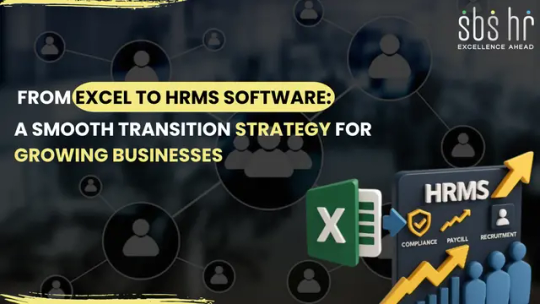
As your company expands, handling HR functions with spreadsheets soon becomes unmanageable. Although Excel may have served in its early days, it can’t possibly match the complexity of an expanding workforce. Errors in data, version controls, and manual processes begin to bring operations to a grinding halt. But this is exactly where an HRMS comes into the spotlight. A centralized platform works to streamline your entire operation and opens up space for any business to expand effectively.
What is HRMS and How Can It Help Expanding Businesses?
An HRMS is any solution that integrates any number of HR functions into one system. It handles any recruitment and onboarding, payroll, attendance, leave tracking, performance management, and any compliance. Instead of dealing with multiple spreadsheets and paper files, it’s all in one location. This not only takes time but also reduces errors and allows HR staff to concentrate on higher-level work. Above all, an HRMS provides you with precise, real-time information to make sound decisions..
Signs Your Business is Ready for an HRMS Software Upgrade.
Not sure if it’s time to leave Excel behind? Here are some clear indicators:
Payroll Discrepancies: When salary mistakes or delays are occurring too often, it indicates your process should be automated.
Compliance Challenges: Struggling to stay current with regional and local labor legislation could indicate the necessity of a system that monitors regulatory changes.
Overloaded HR Department: If your HR department is spending the majority of their time on admin tasks, it signifies that your equipment is not efficient enough.
Scattered Data: If retrieving basic employee data is a scavenger hunt, you require centralized access.
Weak Reporting: Having trouble producing accurate reports timely? You’re lacking vital information that can be derived from HRMS.
Selecting the Right HRMS Software for Your Business Needs
The right HRMS is not simply about features—it’s about compatibility. Think about the following:
Core Features: Make sure the platform supports vital HR work including payroll, time tracking, leaves, and performance evaluations.
Growth-Friendly: Choose a system that will scale with your company without requiring a complete overhaul in the future.
Integration Options: It must integrate smoothly with your current software—such as accounting software, biometric attendance devices, and ERP systems.
Ease of Use: An intuitive interface aids in accelerating adoption by your staff and lowering the learning curve.
Support and Compliance Tools: Ensure there is supportive support and integrated tools that aid in maintaining compliance with labor laws.
For tailored HRMS recommendations and implementation, SBHSR offers comprehensive HR outsourcing services to businesses in Chennai.
Preparing Your Staff for the Excel to HRMS Transition
Change can be difficult, but it doesn’t need to be disruptive with the proper strategy:
Involve Key People Early: Involve HR, IT, and other affected teams when investigating options. They’ll provide advice that will improve your decisions.
Educate and Train: Provide clear training and support materials so the new system feels comfortable for all to use.
Roll Out in Stages: Pilot a small group first before a company-wide rollout. It minimizes troubleshooting problems down the line.
Highlight the Benefits: Demonstrate to your team how HRMS will simplify their day-to-day, such as taking leave or retrieving payslips easily.
Common Mistakes to Avoid During HRMS Implementation
Avoiding these common pitfalls can save you time and hassle:
Going Too Fast: Pushing implementation too fast usually results in confusion and technical problems.
Skipping Customization: One-size-fits-all hardly ever works—adapt the system to your workflows.
Bad Data Migration: Migrating old or bad data can cause long-term issues. Clean the records first.
Not Providing Sufficient Training: The greatest system is worthless if your staff doesn’t know how to use it effectively.
No Defined Leadership: Task the responsibilities and ensure someone oversees the transition from beginning to end.
Post-Implementation: Measuring Success and ROI
After the HRMS goes live, measure its performance with the following essential metrics:
Time Efficiency: Compare the amount of time it takes to perform tasks such as payroll, onboarding, or reporting now and how it used to be.
Fewer Errors: Track decreases in data entry errors and deadlines not met.
Employee Engagement: Track how frequently employees use self-service functionality such as leave request and payslip download.
Faster Reporting: Measure how fast and accurately you can now produce HR reports.
User Feedback: Collect feedback from users to identify what’s going well and where it can be improved.
Final Thoughts: Future-Proofing Your HR Operations
Shifting from Excel to HRMS isn’t just a tech upgrade—it’s a step toward building a more agile, data-driven HR function. As your team grows and your operations become more complex, having the right tools in place ensures you’re ready for the future. With streamlined workflows, improved accuracy, and greater transparency, an HRMS empowers your HR team to focus on what really matters: supporting your people and driving your business forward.
Our Service:
Payroll Outsourcing services | peo service providers in india | eor company in india | Talent Acquisition Services
#sbshr#chennai#hrmssoftware#excel#hroperations#hrfunctions#hrreports#payrolloutsourcingservices#payrollmanaement#trending#eorservices#hrservices#hroutsoutsourcing
0 notes
Text
Difference Between Data Analyst and BI Analyst
In the fast-paced digital age, data is more than just numbers—it’s the foundation of strategic decisions across industries. Within this data-driven ecosystem, two prominent roles often come up: Data Analyst and Business Intelligence (BI) Analyst. Though their responsibilities sometimes intersect, these professionals serve distinct purposes. Understanding the differences between them is crucial for anyone looking to build a career in analytics.
For individuals exploring a career in this field, enrolling in a well-rounded data analyst course in Kolkata can provide a solid stepping stone. But first, let’s dive into what differentiates these two career paths.
Core Focus and Responsibilities
A Data Analyst is primarily responsible for extracting insights from raw data. They gather, process, and examine data to identify patterns and trends that help drive both operational improvements and strategic decision-making. The focus here is largely on data quality, statistical analysis, and deriving insights through quantitative methods.
On the other hand, a BI Analyst is more focused on turning those insights into actionable business strategies. BI Analysts create dashboards, visualize data through tools like Power BI or Tableau, and present their findings to business leaders. Their goal is to help decision-makers understand performance trends, monitor KPIs, and identify opportunities for growth.
In short, data analysts focus more on exploration and deep analysis, whereas BI analysts specialize in communicating the meaning of that data through accessible visuals and reports.
Tools and Technologies
The toolkit of a data analyst usually includes:
SQL for querying databases
Excel for basic data wrangling
Python or R for statistical analysis
Tableau or Power BI for initial visualizations
BI Analysts, while they may use similar tools, concentrate more on:
Dashboard-building platforms like Power BI and Tableau
Data warehouses and reporting tools
Integration with enterprise systems such as ERP or CRM platforms
By starting with a strong technical foundation through a data analyst course in Kolkata, professionals can build the skills needed to branch into either of these specialties.
Skill Sets: Technical vs Business-Centric
Though both roles demand analytical thinking, their required skill sets diverge slightly.
Data Analysts need:
Strong mathematical and statistical knowledge
Data cleaning and transformation abilities
Comfort working with large datasets
Programming skills for automation and modeling
BI Analysts require:
Business acumen to align data with goals
Excellent communication skills
Advanced visualization skills
Understanding of key performance indicators (KPIs)
Aspiring professionals in Kolkata often find that attending an offline data analyst institute in Kolkata provides a more immersive experience in developing both sets of skills, especially with in-person mentoring and interactive learning.
Career Trajectories and Growth
The career paths of data analysts and BI analysts may overlap initially, but they often lead in different directions.
A Data Analyst can progress to roles like:
Data Scientist
Machine Learning Engineer
Quantitative Analyst
Meanwhile, a BI Analyst may evolve into positions such as:
BI Developer
Data Architect
Strategy Consultant
Both paths offer exciting opportunities in industries like finance, healthcare, retail, and tech. The key to progressing lies in mastering both technical tools and business logic, starting with quality training.
The Value of Offline Learning in Kolkata
While online learning is widely available, many learners still value the discipline and clarity that comes with face-to-face instruction. Attending an offline data analyst institute in Kolkata helps bridge the gap between theoretical concepts and practical application. Learners benefit from real-time feedback, collaborative sessions, and guidance that fosters confidence—especially important for those new to data analytics.
DataMites Institute: Your Trusted Analytics Training Partner
When it comes to structured and globally recognized analytics training, DataMites stands out as a top choice for learners across India.
The courses offered by DataMites Institute are accredited by IABAC and NASSCOM FutureSkills, ensuring they align with international industry benchmarks. Students benefit from expert guidance, practical project experience, internship opportunities, and robust placement assistance.
DataMites Institute provides offline classroom training in major cities like Mumbai, Pune, Hyderabad, Chennai, Delhi, Coimbatore, and Ahmedabad—offering learners flexible and accessible education opportunities across India. If you're based in Pune, DataMites Institute provides the ideal platform to master Python and excel in today’s competitive tech environment.
For learners in Kolkata, DataMites Institute represents a trusted gateway to a rewarding analytics career. With a strong emphasis on practical exposure, personalized mentoring, and real-world projects, DataMites Institute empowers students to build confidence and credibility in the field. Whether you're just starting out or looking to upskill, this institute offers the resources and structure to help you succeed in both data and business intelligence roles.
While both Data Analysts and BI Analysts play pivotal roles in transforming data into value, they approach the task from different angles. Choosing between them depends on your interest—whether it lies in deep analysis or strategic reporting. Whichever path you choose, building a strong foundation through a quality training program like that offered by DataMites in Kolkata will set you on the right trajectory.
0 notes
Text
Simplifying Data Management in 2025: How Point-and-Click Tools and Smart Ops Software Are Fixing Mismatched Data
In today’s data-driven business landscape, accuracy, speed, and usability are more important than ever. As organizations grow, so does the volume and complexity of their data—often leading to fragmented systems, duplicate records, and mismatched insights.
To tackle these challenges, companies are turning to smarter solutions like point-and-click data tools, intelligent mismatched data solutions, and advanced data ops software. For businesses seeking to streamline operations without complex coding or high overhead, Match Data Pro LLC is leading the way in this space.
The Modern Data Challenge: Too Much, Too Messy
From CRMs to ERPs and e-commerce systems to marketing platforms, businesses today operate across dozens of interconnected tools. While these tools collect valuable information, they often don’t communicate well with each other. This lack of integration leads to mismatched data—conflicting customer records, inconsistent reporting, and unreliable analytics.
Here are some common problems businesses face:
Duplicate or inconsistent customer profiles across platforms
Misaligned sales and marketing data
Incorrect financial or inventory data leading to poor decisions
Wasted hours manually cleaning up data
This is where smart, no-code tools and automated operations come into play.
Point-and-Click Data Tools: Empowering Non-Technical Teams
Gone are the days when managing data required writing complex SQL queries or hiring an army of engineers. Today, point-and-click data tools offer intuitive interfaces that allow business users—regardless of technical background—to access, clean, move, and analyze data with just a few clicks.
These tools, offered by companies like Match Data Pro LLC, allow users to:
Drag and drop fields to transform data
Merge datasets across platforms
Identify and resolve mismatched or duplicate entries
Set up workflows visually, with no code required
By reducing dependency on IT teams, point-and-click data platforms speed up time to insight and empower every department—sales, marketing, finance, and operations—to take control of their data.
Mismatched Data Solutions: Fixing Inconsistencies Before They Become Problems
Mismatched data isn’t just an inconvenience—it’s a risk. If your analytics are built on conflicting inputs, every insight becomes questionable.
Mismatched data solutions focus on identifying, reconciling, and resolving these inconsistencies before they disrupt operations. Match Data Pro LLC’s intelligent matching and validation engine scans across datasets to flag issues such as:
Conflicting addresses, phone numbers, or email formats
Outdated records or entries missing key fields
Their platform uses a combination of fuzzy logic, AI, and customizable rules to find and fix discrepancies at scale. This ensures businesses are working with clean, consistent, and trustworthy data, no matter the source.
The impact? Better customer targeting, smoother workflows, and more accurate decision-making.
Data Ops Software: Automating the Entire Data Lifecycle
While point-and-click tools help users work with data interactively, data ops software automates the entire process—from data ingestion and validation to transformation, enrichment, and delivery.
Think of it as DevOps for data—only instead of deploying code, you're deploying trusted, usable data pipelines.
Match Data Pro LLC’s data ops software includes:
Real-time data syncing across platforms
Workflow automation triggered by data events
Monitoring and alerting for anomalies
Integration with APIs and cloud storage
This approach ensures that data flows consistently and reliably through the organization, enabling real-time dashboards, customer insights, and agile decision-making.
Why This Matters in 2025
As more companies embrace AI, predictive analytics, and customer personalization, clean and connected data has become a core competitive advantage.
Here’s why adopting tools like those from Match Data Pro LLC matters more than ever:
Faster Time to Value: Point-and-click tools reduce setup time and allow users to act quickly.
Reduced Operational Errors: Fixing mismatches upstream prevents costly downstream issues.
Improved Collaboration: With intuitive interfaces and shared tools, departments can work from the same source of truth.
Scalability: As your business grows, automated pipelines and smart matching scale effortlessly.
Whether you're a fast-growing startup or an enterprise with legacy systems, these modern tools bring agility to your data infrastructure.
Real-World Use Cases
Retailers use point-and-click data mapping to sync product and inventory data across POS systems and e-commerce platforms.
Healthcare providers rely on mismatched data solutions to consolidate patient records across different departments.
Marketing teams utilize data ops workflows to ensure lead data is clean and enriched before entering CRM and automation tools.
Finance departments automate reconciliation processes by linking records from banks, ERPs, and accounting platforms.
Match Data Pro LLC: Your Partner in Smart Data Management
At Match Data Pro LLC, we believe that managing data shouldn’t be complex or intimidating. That’s why we’ve built solutions that prioritize simplicity, automation, and reliability.
Whether you need to clean up messy data, automate your daily syncs, or empower your team with intuitive tools, we’ve got you covered. Our platform blends user-friendly interfaces with robust back-end processing—making it the perfect fit for modern, data-driven teams.
Final Thoughts
The data revolution doesn’t require revolutionizing your whole team. With the right tools—point-and-click data solutions, mismatched data resolution, and smart data ops automation—any business can operate at enterprise-grade efficiency without the enterprise-grade cost or complexity.
0 notes